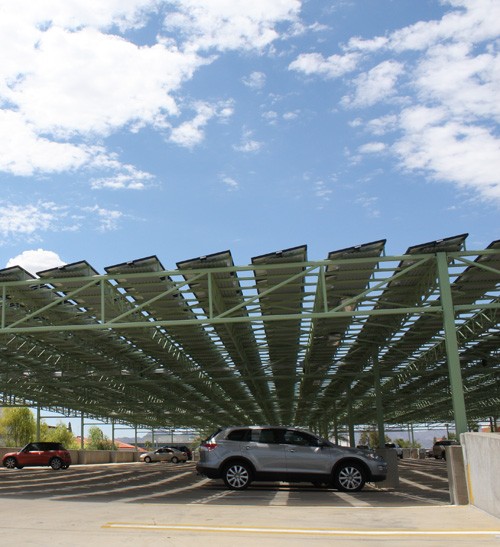The planning, design and construction groups at the UA say they are investing themselves whole-heartedly into the “”green”” movement, with four solar projects still on the way.
As the first phase of the solar movement, the Second Street Parking Garage has been decked out in photovoltaic solar panels since early August, and the panels should be up and running within the next few weeks.
Ralph Banks, assistant director of engineering, planning, design and construction for the UA, said the solar panels atop the parking structure will generate about 210 kilowatts per day, which is equivalent to powering forty averaged-sized homes.
The power will be used to support functions within the structure, like powering the elevators, and whatever is not used will be filtered into the university’s grid, he said.
With the help of APS Energy Services, the UA will begin a multiple phase effort to move toward solar power.
Starting with the Second Street Parking Garage, engineers will now look toward installing photovoltaic solar panels on McClelland Hall, McClelland Park, and eventually the Student Recreation Center and Hillenbrand Aquatic Center.
“”I love that the UA is being proactive about utilizing solar energy,”” said Deven McMorrow, a physiology junior. “”We have plenty of sun here in Arizona, so it makes sense to have solar energy power most of our daily electricity use.””
Project leaders predict that the initial phase of the solar project will produce about 500 kilowatts in total — which is a relatively small portion of the university’s overall electricity bill.
“”The University consumes about 26 megawatts of electricity in the middle of the summer,”” said Banks. “”But, we do not know how big this could become, which is the fun part.””
Project leaders say they are looking at the solar movement from a research aspect as well as conservation.
“”Because we are a research university, we hope to monitor this and receive a lot of research knowledge,”” said Banks. “”I’m not sure how many universities are planning on doing projects similar to ours, but we are the solar capitol of the U.S. The next steps are really exciting.””









